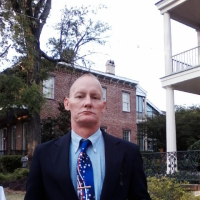The Cancer Survivors Network (CSN) is a peer support community for cancer patients, survivors, caregivers, families, and friends! CSN is a safe place to connect with others who share your interests and experiences.
Bronchoscope result
8mm spiculated nodule identified on CT Feb 2025. RLL. Also 4mm fissural nodule LUL. Bronchoscope at Mayo Feb 2025 on 8 mm nodule performed. CT spin technology confirmed needle in left inferior edge of lesion. All path results from procedure showed no evidence of malignancy nor lymphadenopathy.
no other source of nodule identified (infection). Deemed inflammatory by pulmonologist.
Repeat CT in May 2025 showed both nodules stable and no growth. Next CT in September 2025. Could these still be malignant or benign process?
Comments
-
-
Could these still be malignant or benign?
Sure, those are the only two options
Sorry, couldn’t resist 😄
But seriously, given the negative biopsy, lack of growth over several months, and no systemic signs or lymphadenopathy, the odds of this being an invasive cancer right now seem extremely low. I do not believe you can rule out cancer with 100 percent certainty, but with stability and time, the probability continues to drop.
If it does turn out to be malignant, the odds are high that it would be something indolent like minimally invasive adenocarcinoma (MIA) or the noninvasive adenocarcinoma in situ (AIS). While I believe all lung cancers have a chance of being cured(I'm 5 plus years into a 4b diagnosis), these noninvasive and minimally invasive types are the only ones considered curable by definition.
-
Honestly most in your situation never end up with cancer so don't end up here or stop checking in when they stop scheduling scans.
My nephew had nearly identical as you. He had an inconclusive biopsy then scans at 3, 6 and 12 months.nothing. He hasn't mention it once since before the 6 month scan as far as I and his parents know it's not cancer. They chalked it up to inflammation from the chemicals he used in his job.
Sorry I can't be of direct help. I know how a similar situation can give clarity. I did the same with my diagnosis.
-
Well, you can never be too sure when being followed for suspicious nodules. Despite the encouraging findings in my case, my latest CT revealed a 1mm growth in the 8mm nodule that previously was stable. At Mayo I meet with a cardio thoracic surgeon on Monday to discuss surgical approach. I’ve chosen this rather than radiation so we can get a definitive diagnosis and genetic info. I’m guessing a wedge or segmentectomy via robot or VATS. Also, no lymphadenopathy in latest CT but I hope we examine nodes thoroughly during procedure. And I’m sure they do frozen sections during the procedure?
The nurse navigator at Mayo helping my navigation on this issue has stated that the procedure can be ‘curative’. I hope so.
Anyone with similar circumstances, I would appreciate you insight, comments or guidance on my plans. -
I’m sure this has been a difficult decision and one that feels a bit aggressive. While it may seem that way, I think as a patient I would want the same answers. A definitive diagnosis, plus the genetic profile if it turns out malignant, is a big benefit. And even if it comes back benign, having that certainty is going to be a huge stress reliever.
If it does turn out malignant, there’s a very high chance it will be stage 0 adenocarcinoma in situ (AIS) or minimally invasive adenocarcinoma (MIA). AIS is considered cured after surgery, with essentially 100% disease-specific survival at 5 years, and MIA is nearly the same.
Most large cancer centers do intraoperative analysis to help guide surgery. Typically, they’ll start with a Rapid On-Site Evaluation (ROSE), which is cytology , a quick look at the cells to confirm whether it’s malignant. Then they move to histology using frozen section, usually in an OR-adjacent lab. That gives a bigger picture not just “is it cancer” but what type it looks like, and whether margins or lymph nodes are involved. This helps guide whether the surgeon stops at a wedge, goes to a segmentectomy, or occasionally extends further. Final, permanent histology usually takes a few days, and a genetic profile can take 1–3 weeks.
One small distinction about words: “Curative” means the intent is to cure, which applies to most early-stage lung cancers even though a recurrence wouldn’t be unusual. “Cure” means you would not expect the cancer to ever come back, and recurrence would be a surprise. AIS and MIA fall into this latter category , they are considered cured once resected.
Good luck with the procedure. Hopefully it all comes back benign, and if not I'm sure you'll have caught it very early
Discussion Boards
- All Discussion Boards
- 6 Cancer Survivors Network Information
- 6 Welcome to CSN
- 122.6K Cancer specific
- 2.8K Anal Cancer
- 456 Bladder Cancer
- 312 Bone Cancers
- 1.7K Brain Cancer
- 28.6K Breast Cancer
- 407 Childhood Cancers
- 28K Colorectal Cancer
- 4.6K Esophageal Cancer
- 1.2K Gynecological Cancers (other than ovarian and uterine)
- 13.1K Head and Neck Cancer
- 6.4K Kidney Cancer
- 683 Leukemia
- 804 Liver Cancer
- 4.2K Lung Cancer
- 5.1K Lymphoma (Hodgkin and Non-Hodgkin)
- 242 Multiple Myeloma
- 7.2K Ovarian Cancer
- 70 Pancreatic Cancer
- 493 Peritoneal Cancer
- 5.6K Prostate Cancer
- 1.2K Rare and Other Cancers
- 544 Sarcoma
- 744 Skin Cancer
- 661 Stomach Cancer
- 192 Testicular Cancer
- 1.5K Thyroid Cancer
- 5.9K Uterine/Endometrial Cancer
- 6.4K Lifestyle Discussion Boards

